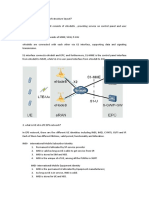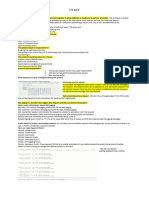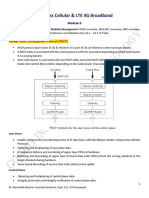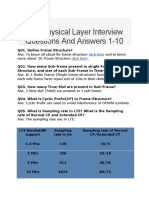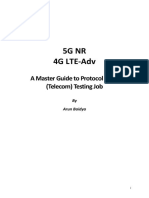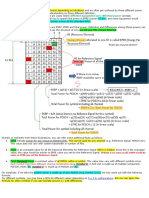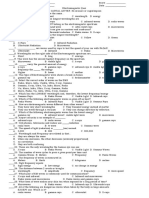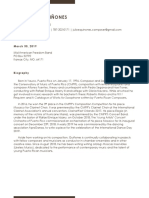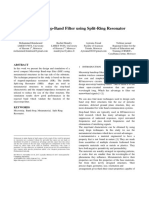0% found this document useful (0 votes)
69 views1 pageLTE / LTE-Advanced: Number of Cells and Protocol Stack: Follow-Up Question
PCC and SCC refer to the primary and secondary component carriers in LTE carrier aggregation. The PCC is the carrier that handles the RRC connection and NAS signaling, while SCCs provide additional radio resources for IP services. A single protocol stack with multiple PHY layers can serve different component carriers transmitted over one antenna/sector. When there are multiple antennas serving different areas, there are multiple protocol stacks, one for each sector.
Uploaded by
ZteTems OptCopyright
© © All Rights Reserved
We take content rights seriously. If you suspect this is your content, claim it here.
Available Formats
Download as DOC, PDF, TXT or read online on Scribd
0% found this document useful (0 votes)
69 views1 pageLTE / LTE-Advanced: Number of Cells and Protocol Stack: Follow-Up Question
PCC and SCC refer to the primary and secondary component carriers in LTE carrier aggregation. The PCC is the carrier that handles the RRC connection and NAS signaling, while SCCs provide additional radio resources for IP services. A single protocol stack with multiple PHY layers can serve different component carriers transmitted over one antenna/sector. When there are multiple antennas serving different areas, there are multiple protocol stacks, one for each sector.
Uploaded by
ZteTems OptCopyright
© © All Rights Reserved
We take content rights seriously. If you suspect this is your content, claim it here.
Available Formats
Download as DOC, PDF, TXT or read online on Scribd
/ 1



